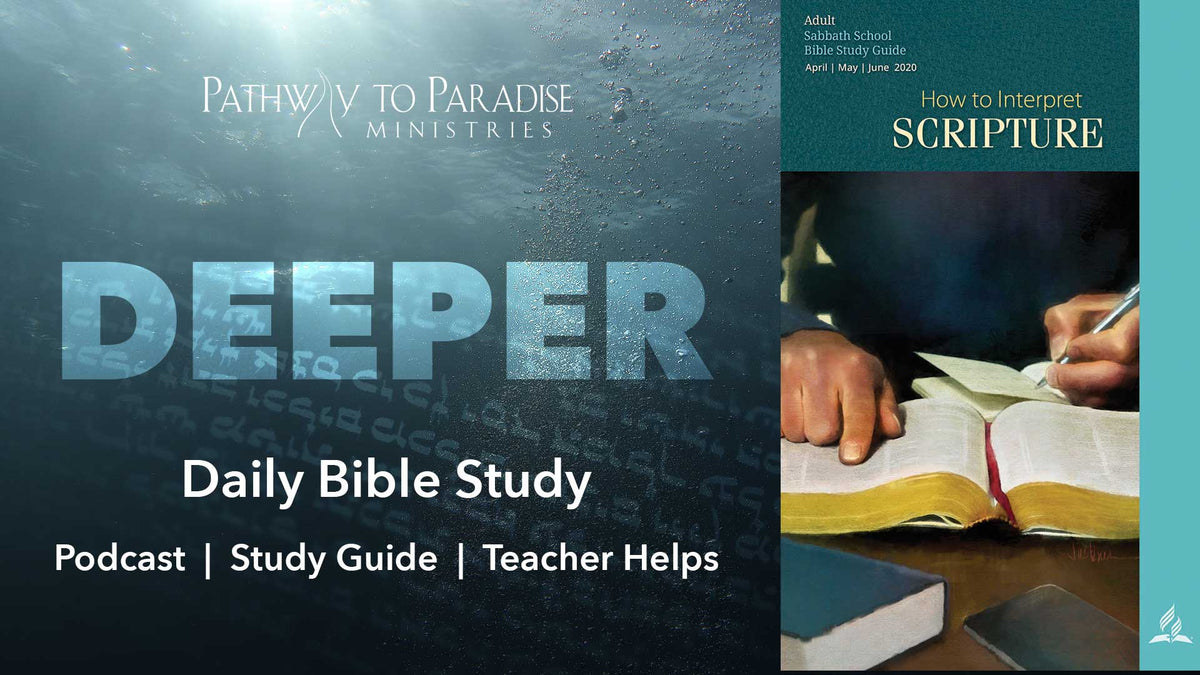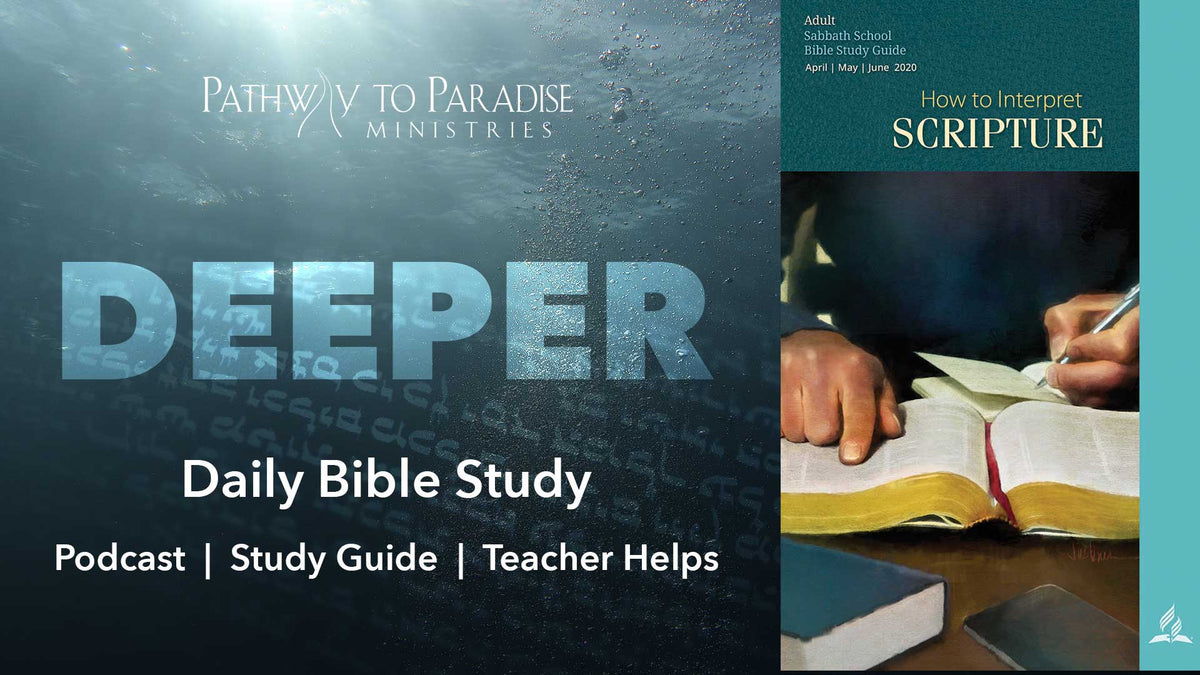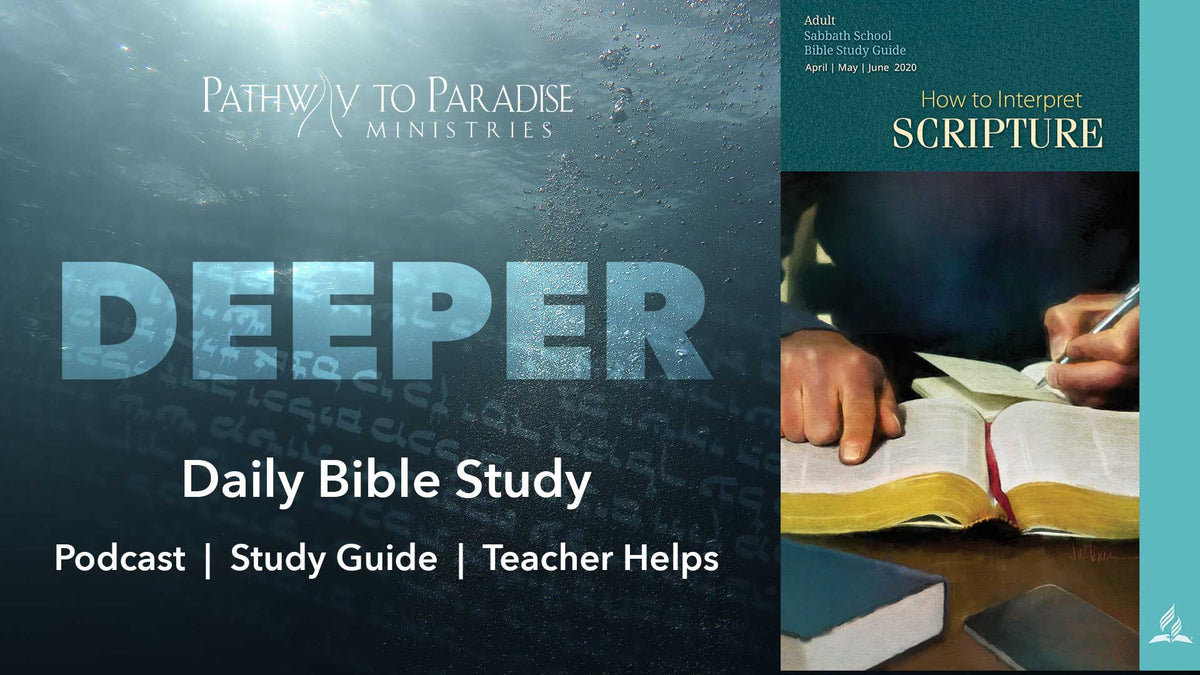Notes: "Worthy is the Lamb" (2019, QTR 1, Lesson 4)

Sabbath (January 19)
In Revelation 4, John sees the heavenly throne room, from where God exercises His control and guidance of the entire universe. It is hard for human beings to comprehend or imagine such power, especially such power used in a loving way and for selfless ends.
This should not be understood to say that humans are left without freedom of choice. Just a few paragraphs later we read,
In the word of God only is this clearly set forth. Here it is shown that the strength of nations, as of individuals, is not found in the opportunities or facilities that appear to make them invincible; it is not found in their boasted greatness. It is measured by the fidelity with which they fulfill God’s purpose. {Ed 175.2}
As the lesson emphasizes, two important concepts should guide our study of Revelation 4 and 5, and the remainder of the book:
1. The centrality of Christ's high-priestly ministry in heaven which gives Him sovereignty over the affairs of earth. This theme will be explored more fully later this week.
2. From this point onward, Revelation becomes even more symbolic, and the key to understanding this symbolism is taken from the history and the prophecies of the Old Testament. A few examples of this include:
i. The beasts from the sea (Daniel 7 and Revelation 13)
ii. The seal of God (Ezekiel 9 and Revelation 7 and 13)
iii. Command to eat the book (Jeremiah 15:16; Ezekiel 2:8; and Revelation 10:9)
b. Historical experiences of God's people in the Old Testament reflected in Revelation
i. The plagues on Egypt and the seven last plagues (Exodus 7-11 and Revelation 16)
ii. The Song of Moses and the Lamb (Exodus 15 and Revelation 15)
Without a proper understanding of the Old Testament, therefore, it is difficult to understand Revelation.
The Spirit of Prophecy is very clear that the prophecies of Revelation repeat the prophecies of Daniel.
Sunday (January 20): In the Heavenly Throne Room
In Revelation 4:2, John sees a throne “set” (KJV) in heaven. Compare Daniel’s description of God’s throne at the beginning of the judgment in Daniel 7:9-10. What can we learn about God’s concern and care for humanity based on these views of the heavenly throne room? (All of heaven’s power and energy has been directed toward solving the sin problem and rescuing humanity from sin.)
In Revelation 4:2, John describes seeing Someone on the throne, yet he does not go into detail as he did with the description of Christ in Revelation 1. Discuss why this may be so (compare John 1:18 and 1 Timothy 6:16).
In Revelation 4:3, John sees a rainbow encircling God’s throne. Discuss the significance of the rainbow (compare Genesis 9:8-17; Psalm 89:14). (The rainbow can represent God’s justice and His mercy combined, just as sunlight and water, or the storm, combined create a rainbow.)
Monday (January 21): The Heavenly Assembly in the Throne Room
In symbolic prophecy, the symbols are to teach lessons, not to represent the literal. Remembering this when studying a highly symbolic book such as Revelation will prevent dangerous errors in interpretation, such as concluding that the dragon in Revelation 12 presents China or the bear-like beast in Daniel 7 represents Russia. Rather, the symbols are to be interpreted based on the teaching objective the Bible intends. Examples of this include:
-
Angels act the part later to be carried out by men (Revelations 10:1-11; Revelation 14:6-12)
-
Caricatured beasts and dragons dramatize parts of nations and supernatural powers (Daniel 7 and 8; Revelation 12, 13, and 17)
-
Jesus Christ being represented as a slain Lamb (Revelation 5:6)
Discuss what lessons and hope God wants us to obtain through these visions of heaven’s throne room. (Possible answers include assurance that He is in control, comfort in His perfect insight and wisdom, and a heavenward focus that enables us to withstand the storms of life.)
Tuesday (January 22): The Sealed Scroll
In Revelation 5:1-4, John sees a sealed scroll that no creature can open, and he begins to weep. Compare Isaiah 29:11-12, and discuss why this scroll is so significant to John and to us. (See the Spirit of Prophecy statements below for added insight into the scroll’s significance.)
The lesson summarizes the scroll as representing the “mystery of God” mentioned in Revelation 10:7. What is this “mystery”? (Compare Colossians 1:27 and 1 Timothy 3:16.)
Wednesday (January 23): Worthy Is the Lamb
In Revelation 5:8-14, John sees the only Being in the universe able to open the scroll. Here Jesus Christ is portrayed symbolically as a “Lamb as it had been slain” (KJV). In light of Revelation 5:9 and Philippians 2:5-8, why is Christ the only One able to open the scroll? (He alone is worthy because of His character, His willingness to empty Himself for man, and His successful work of redemption).
“Lamb” = Greek arnion (used 29 times in Revelation and just once elsewhere in the NT)
Thursday (January 24): The Significance of Pentecost
Revelation chapters 4 and 5 present a breathtaking view of the “heavenly Pentecost,” the coronation of Christ as Priest and King in heaven. That Christ was anointed as High Priest on Pentecost is clear from this statement:
Christ’s ascension to heaven was the signal that His followers were to receive the promised blessing. For this they were to wait before they entered upon their work. When Christ passed within the heavenly gates, He was enthroned amidst the adoration of the angels. As soon as this ceremony was completed, the Holy Spirit descended upon the disciples in rich currents, and Christ was indeed glorified, even with the glory which He had with the Father from all eternity. The Pentecostal outpouring was Heaven’s communication that the Redeemer’s inauguration was accomplished. According to His promise He had sent the Holy Spirit from heaven to His followers as a token that He had, as priest and king, received all authority in heaven and on earth, and was the Anointed One over His people. {AA 38.3}
The tremendous events on Pentecost reveal the incredibly deep connection between Christ, the Head, and His church, the body (Ephesians 5:23,25,30,31). As with our physical bodies, what happens to the Head happens to the body—or, what happens to Christ happens to the church. Christ had promised His disciples that He would send the Comforter (John 14:16,17), and His very first prayer after being anointed as High Priest was that His church would share in this experience.
Psalm 23 as a Prophecy of Pentecost
Psalm 23 is really a prophecy of Pentecost. Psalm 23:1-3 predicts Christ’s dependent trust on His heavenly Father during His earthly ministry, and Psalm 23:4 predicts His suffering and death. Psalm 23:5 predicts Christ’s anointing in heaven as High Priest, and it even reveals that so much of the Holy Spirit would be poured upon Him like “oil,” that it would “run over.” If someone poured an abundance of oil on your head, it would run down onto your shoulders and body, and this is exactly what happened on Pentecost. Christ received an abundance of the Holy Spirit and this same blessing poured onto His body, the church (compare Acts 2:1-4)!
Friday (January 25): The Priesthood of All Believers
More Thoughts on the Holy Spirit
When the Holy Spirit fell on the church at Pentecost, the disciples immediately began to speak with “other tongues” (Acts 2:4). The promise of the “latter rain” of the Holy Spirit is echoed later in Revelation where God’s people at the end of time are pictured sharing the gospel in every “tongue” (Revelation 10:11 and 14:6). Clearly, this work cannot be accomplished without a second and greater outpouring of God’s Spirit.
-
To what extent have Seventh-day Adventists been successful in fulfilling this commission?
-
To what extent have we tried to complete “the work” on our own power, in our own wisdom, and with our own ideas?
-
What alone will enable God to finally pour out His Spirit in latter rain power on His people today? (Compare Acts 1:14,23-26; 2:1; and AA 35-38.)
Thoughts on the Lion and the Lamb
In Revelation 5:5-6, Jesus Christ is presented as both the Lion and the Lamb. These two widely different symbols represent the divinity and humanity of Christ, as well as the combination of His political (the Lion) and religious (the Lamb) power. In God's government alone can political and religious power be safely combined. In the second half of Revelation, the issue of the combination of political and religious power becomes a huge focus of prophecy, especially in connection with the beast, the mark of the beast, and the persecution of the saints (Revelation 13 and 14).
Thoughts on the "Priesthood of All Believers"
In Revelation 5:10, the 24 elders praise God for making them "kings and priests," and this passage is not the only one in the Bible where God's people are identified as being priests (see, for instance, 1 Peter 2:9 and Exodus 19:6). While the phrase "priesthood of all believers" never appears in the Bible, the concept is rooted in these and other passages.
But what does the Bible mean when it refers to all of God's people as "priests"? Peter's use of this term is really just a paraphrase of Exodus 19:6, where God extends this promise to His people in the Old Testament, "And ye shall be unto me a kingdom of priests, and a holy nation" (Exodus 19:6). Clearly, God never intended that every single Israelite serve in the position of a priest; this job was reserved for Aaron and his sons (Leviticus 8:1-13). Rather, God intended that every Israelite share in the character that was to distinguish the priests, so that they would be "a holy nation" (Exodus 19:6).
The Bible identifies three specific aspects of the priesthood that reveal the character God has always wanted His people to have.
- Hebrews 5:1 (and many other passages) reveals that one of the major duties of the priests was to "offer both gifts and sacrifices." Likewise, every Christian is called to "present your [body] a living sacrifice" (Romans 12:1). An attitude of self-surrender and devotion to God will mark every true Christian.
- Hebrews 5:2 further states that a priest should "have compassion on the ignorant, and on them that are out of the way." In other words, a primary duty of the priesthood was to show compassion on sinners by revealing to them the gospel and the coming Savior. They were to explain the sanctuary message, its symbolism, and the purpose of the sacrifices. Likewise, every Christian should share God's love for the lost and do all within their power to share the everlasting gospel. This, of course, is the primary mission of the Christian church (Matthew 28:19,20).
- Finally, Leviticus 10:10-11 reveals that the Old Testament priests were to "put difference between holy and unholy, and between unclean and clean." Furthermore, they were to "teach the children of Israel all the statutes which the Lord hath spoken." Likewise, every Christian is called to live a holy life (1 Peter 1:15,16) and to explain and teach the importance of keeping the law of God (Matthew 28:20).
As applied to Christians today, therefore, the concept of the "priesthood of all believers" speaks directly to the character that God desires to see in His people.
Listen to the Daily Podcast!
Go to the DEEPER Webpage or Listen Below
Leave a comment
Comments will be approved before showing up.
Also in DEEPER Bible Study Notes

Living by the Word of God (2020, Quarter 2, Lesson 13)

Dealing With Difficult Passages (2020, Quarter 2, Lesson 12)


admin admin
Author